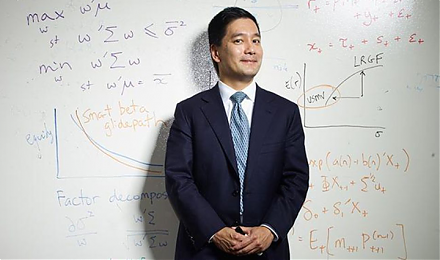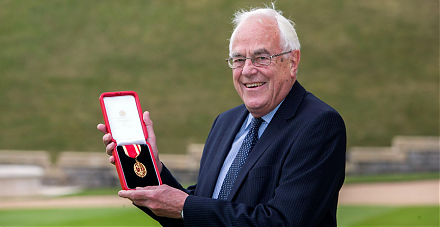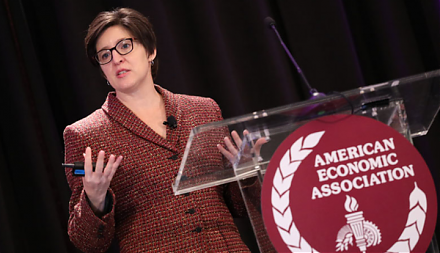

2020-05-07 08:26:00 Thu ET
technology apple fifth discipline value creation proprietary assets flywheel team leaders specialists advisors founders senior managers domain expertise institutional knowledge rare resources investments reinvention disruptive innovation sustainable profitability clayton christensen discovery steve jobs
Disruptive innovators often apply their 5 major pragmatic skills in new blue-ocean niche discovery and market share dominance.
Jeff Dyer, Hal Gregersen, and Clayton Christensen (2011)
The innovator's DNA: mastering the top discovery skills of disruptive innovators
Clayton Christensen and his co-authors dispel the myth that only a few disruptive innovators share the creative gene. By examining many well-known innovators to explain the key values, processes, and resources for disruptive tech breakthroughs, Christensen et al offer a prescient blueprint for cultivating an organizational culture of disruptive innovations. Senior executive managers should build associative links to connect the dots for iterative continual improvements. These corporate leaders should further ask the right questions to identify the target audiences and customer needs, demands, tastes, beliefs, and preferences. Disruptive innovators must like to observe different disciplines, professions, and industries etc in order to connect emergent external environments and market conditions to their core competencies.
Moreover, it is often important for senior corporate decision-makers to include both subject matter experts and non-experts of diverse backgrounds to learn from tests, past groupthink mistakes, experiments, familiar surprises, and fresh perspectives. In essence, these senior corporate leaders must be bold enough to use both pilots and prototypes to try out new experiences, processes, products, and services etc for better iterative experimentation. Each stumbling block can be the next stepping stone, and each caterpillar needs to break the cocoon to transform into a beautiful butterfly. When push comes to shove, the law of inevitable consequences counsels caution. In practice, senior corporate leaders can follow the Christensen blueprint to become the next disruptive innovators in the broader business context.
Everyone can nurture his or her capability to build the next disruptive technological advances regardless of genetic predispositions.
Like Steve Jobs and his Apple business ventures, most people need to respectfully ask the right questions for better prototypes and products in the broader business context. From the beautiful typography available on the MacBook to the small and quiet Apple II computer, people can learn the core skills for disruptive innovations from Steve Jobs, Tim Cook, and their team members at Apple. Learning these key skills for disruptive innovations involves thinking outside the black box in practice. In a fundamental view, people who grow up in core western countries that promote individualism and merit over collectivism and hierarchy are more likely to challenge the status quo with disruptive innovations in a creative way.
Disruptive innovators often take reasonable risks to challenge the status quo. Bold innovators strive to put a ding in the universe with positive contributions worldwide. From time to time, mistakes, failures, biases, and prejudices etc are necessary and inexorable parts of the creative discovery process. However, most senior executive managers typically tend to have better delivery skills than discovery skills. Delivery skills include analytical business plans and technical details for practical execution and implementation. Specifically, these corporate leaders often tend to work inside the box to convert business visions and goals into tasks and missions. In practice, these executive managers are great at delivering positive results and outcomes.
In comparison, disruptive innovators focus on incubating fresh business ideas and insights. In due course, these insights radically change the current business model with simple, reliable, convenient, and cost-effective products and processes. As a result, new target customers hire these alternative products and services to better accomplish specific jobs, tasks, and missions.
In a nutshell, disruptive innovators hone their top 5 major discovery skills:
High-tech disruptive innovators often share several common characteristics.
Christensen et al re-rank the BusinessWeek 2005-2009 list of the most innovative companies to include Amazon, Apple, Google, Cisco, Microsoft, Nintendo, Procter & Gamble, Starbucks, Research in Motion, and Hewlett-Packard. In fact, it is quite reasonable for Christensen et al to identify serial disruptive innovators on the more objective basis of the corporate innovation premium. If the market value of a public corporation exceeds the sum of net cash flows to its core business operations, this discrepancy is the corporate innovation premium. Given this objective fundamental selection criterion, Christensen et al lean toward Amazon, Apple, Celgene, Google, Monsanto, Salesforce, and so forth.
Corporate decision-makers who think outside the box tend to interact with subject matter experts as well as non-experts who play in a different box. In this important way, these corporate decision-makers gain new ideas and fresh perspectives for better triangulation. Disruptive innovators often look for team members with a track record of creative discovery skills. These active team members associate, question, observe, network, and experiment in order to make a socioeconomic impact in the world. From time to time, disruptive innovators encourage these team members to challenge the status quo in the best interests of customers, suppliers, distributors, debtors, shareholders, and other venture capital investors.
Most disruptive innovators honor their words and convictions by investing heavily in a unique organizational culture of team creativity. For instance, Google applies a 20% project rule, which encourages its software engineers to spend 20% of their time, or one day per week, on any pet project of rational choice. Gmail and Google News are 2 well-run Internet software ventures that have arisen from 20% projects. These examples demonstrate the intrinsic value of providing the right environment with core values, processes, and resources to design disruptive innovations.
Meanwhile, disruptive innovators cannot underestimate the organizational value of delivery skills. Within a highly creative work environment, the business still needs delivery-driven middle managers and team members to carry out specific missions and tasks. These contributors apply both business acumen and technical expertise to resolve day-to-day problems and priorities. The lean independent organization should encourage these more technical experts to celebrate small wins throughout many iterative continuous improvements over time.
A good example relates to the dual transformation of Apple iPhones from only one model per year to at least 3 models for better price discrimination worldwide. This transformation reflects the prescient clairvoyance and leadership of Tim Cook and his vice presidents and other direct reports etc. On the one hand, each new iPhone model targets the specific customer group from the high-end tier of Samsung and Huawei smart phone users to the lower-end tier of Oppo, Vivo, and Xiaomi users. On the other hand, Tim Cook and his operational team supervisors orchestrate the seamless integration of core business operations for smooth iPhone delivery. This seamless integration extracts substantial economic rent from global supply chains in a cost-effective manner. This example suggests that disruptive innovations can arise from not only technological advances and functional enhancements but also smoother business operations. At Apple, this latter operational improvement helps deliver the economically desirable outcome of better product diversification. In this light, disruptive innovators often cannot underestimate the organizational value of delivery skills. Although disruptive innovators tend to emphasize creative discovery skills for superior product design and service provision, the lean enterprise requires robust delivery skills from middle managers and other team members to carry out specific tasks and missions. In effect, these specific tasks and missions must align well with the main mandate of core business operations for efficient teamwork. On balance, this efficient team execution helps improve product and service reliability and diversity through the product development cycle.
Clayton Christensen and his co-authors dispel the myth that only a few disruptive innovators share the creative gene. By examining many well-known innovators to explain the key values, processes, and resources for disruptive tech breakthroughs, Christensen et al offer a prescient blueprint for cultivating an organizational culture of disruptive innovations. Senior executive managers should build associative links to connect the dots for iterative continual improvements. These corporate leaders should further ask the right questions to identify the target audiences and customer needs, demands, tastes, beliefs, and preferences. Disruptive innovators must like to observe different disciplines, professions, and industries etc in order to connect emergent external environments and market conditions to their core competencies.
Moreover, it is often important for senior corporate decision-makers to include both subject matter experts and non-experts of diverse backgrounds to learn from tests, past groupthink mistakes, experiments, familiar surprises, and fresh perspectives. In essence, these senior corporate leaders must be bold enough to use both pilots and prototypes to try out new experiences, processes, products, and services etc for better iterative experimentation. Each stumbling block can be the next stepping stone, and each caterpillar needs to break the cocoon to transform into a beautiful butterfly. When push comes to shove, the law of inevitable consequences counsels caution. In practice, senior corporate leaders can follow the Christensen blueprint to become the next disruptive innovators in the broader business context.
This analytic essay cannot constitute any form of financial advice, analyst opinion, recommendation, or endorsement. We refrain from engaging in financial advisory services, and we seek to offer our analytic insights into the latest economic trends, stock market topics, investment memes, personal finance tools, and other self-help inspirations. Our proprietary alpha investment algorithmic system helps enrich our AYA fintech network platform as a new social community for stock market investors: https://ayafintech.network.
We share and circulate these informative posts and essays with hyperlinks through our blogs, podcasts, emails, social media channels, and patent specifications. Our goal is to help promote better financial literacy, inclusion, and freedom of the global general public. While we make a conscious effort to optimize our global reach, this optimization retains our current focus on the American stock market.
This free ebook, AYA Analytica, shares new economic insights, investment memes, and stock portfolio strategies through both blog posts and patent specifications on our AYA fintech network platform. AYA fintech network platform is every investor's social toolkit for profitable investment management. We can help empower stock market investors through technology, education, and social integration.
We hope you enjoy the substantive content of this essay! AYA!
Andy Yeh
Chief Financial Architect (CFA) and Financial Risk Manager (FRM)
Brass Ring International Density Enterprise (BRIDE) © 2013-2023
Do you find it difficult to beat the long-term average 11% stock market return?
It took us 20+ years to design a new profitable algorithmic asset investment model and its attendant proprietary software technology with fintech patent protection in 2+ years. AYA fintech network platform serves as everyone's first aid for his or her personal stock investment portfolio. Our proprietary software technology allows each investor to leverage fintech intelligence and information without exorbitant time commitment. Our dynamic conditional alpha analysis boosts the typical win rate from 70% to 90%+.
Our new alpha model empowers members to be a wiser stock market investor with profitable alpha signals! The proprietary quantitative analysis applies the collective wisdom of Warren Buffett, George Soros, Carl Icahn, Mark Cuban, Tony Robbins, and Nobel Laureates in finance such as Robert Engle, Eugene Fama, Lars Hansen, Robert Lucas, Robert Merton, Edward Prescott, Thomas Sargent, William Sharpe, Robert Shiller, and Christopher Sims.
Follow AYA Analytica financial health memo (FHM) podcast channel on YouTube: https://www.youtube.com/channel/UCvntmnacYyCmVyQ-c_qjyyQ
Follow our Brass Ring Facebook to learn more about the latest financial news and fantastic stock investment ideas: http://www.facebook.com/brassring2013.
Free signup for stock signals: https://ayafintech.network
Mission on profitable signals: https://ayafintech.network/mission.php
Model technical descriptions: https://ayafintech.network/model.php
Blog on stock alpha signals: https://ayafintech.network/blog.php
Freemium base pricing plans: https://ayafintech.network/freemium.php
Signup for periodic updates: https://ayafintech.network/signup.php
Login for freemium benefits: https://ayafintech.network/login.php
If any of our AYA Analytica financial health memos (FHM), blog posts, ebooks, newsletters, and notifications etc, or any other form of online content curation, involves potential copyright concerns, please feel free to contact us at service@ayafintech.network so that we can remove relevant content in response to any such request within a reasonable time frame.
2020-02-26 09:30:00 Wednesday ET

Goldman Sachs follows the timeless business principles and best practices in financial market design and investment management. William Cohan (2011) M
2019-07-31 11:34:00 Wednesday ET

AYA Analytica finbuzz podcast channel on YouTube July 2019 In this podcast, we discuss several topical issues as of July 2019: (1) All 18 systemical
2019-07-29 11:33:00 Monday ET

Blackrock asset research director Andrew Ang shares his economic insights into fundamental factors for global asset management. As Ang indicates in an inter
2023-08-07 12:29:00 Monday ET

Oxford macro professor Stephen Nickell and his co-authors delve into the trade-off between inflation and unemployment in the dual mandate of price stability
2019-03-19 12:35:00 Tuesday ET

U.S. tech titans increasingly hire PhD economists to help solve business problems. These key tech titans include Facebook, Amazon, Microsoft, Google, Apple,
2019-03-09 12:43:00 Saturday ET

Pinterest files a $12 billion IPO due in mid-2019. This tech unicorn allows users to pin-and-browse images through its social media app and website. Pintere